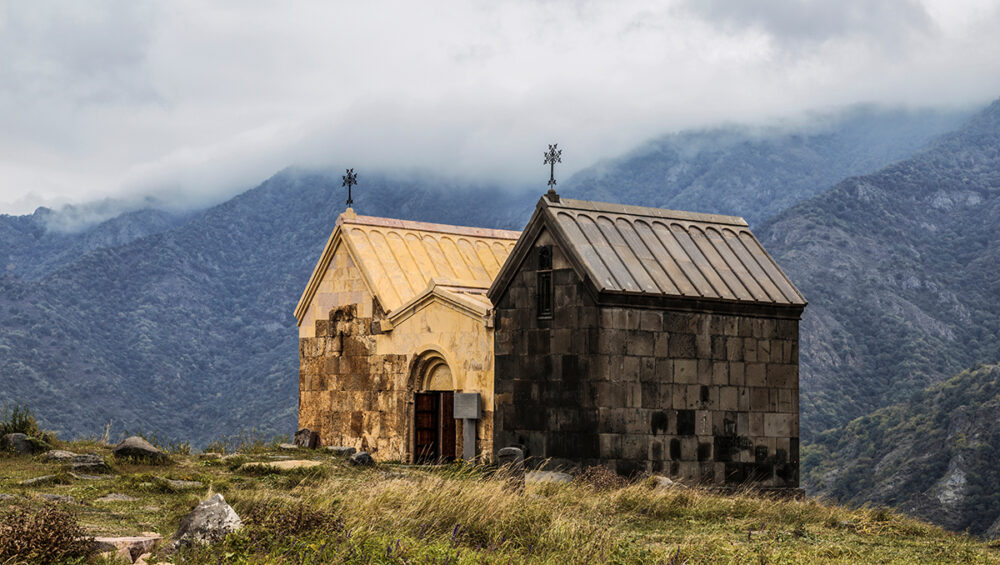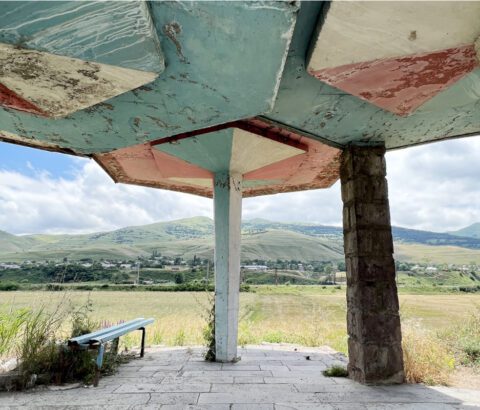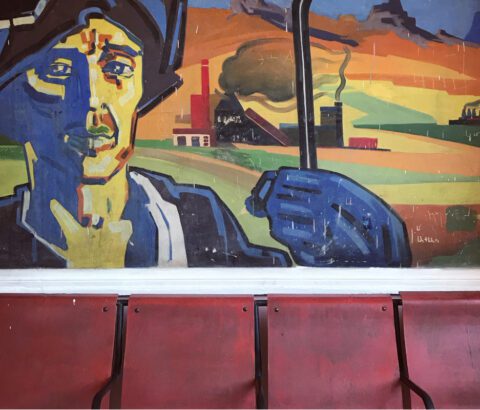The junction where the road to the village of Dsegh starts from looked desolate when we got off the truck we hitchhiked from the city of Vanadzor. As the vehicle drove away, we were left on our own. We looked around, but there were no signs of approaching cars, which meant we were stuck. The village of Dsegh where we were heading to was some 7 kilometers off the main highway, nestled atop a vast plateau overlooking the Debed canyon. We could walk the road up, but the weight of our backpacks was a great demotivating factor. Besides, we were feeling lazy. So we chose to sit on some rocks by the roadside and wait for our next ride, enjoying herbal tea. A stray dog appeared out of nowhere and walked in our direction, wagging its tail like crazy. The poor animal was hoping to get some food, but to its disappointment, we had nothing with us.
It took us several hours and rides to get here from Yerevan. A young man in his 30s gave us a lift to Lake Sevan first, from where an old man offered to take us to the town of Dilijan. He wasn’t talkative and preferred to drive in silence. Then, after a hearty lunch at the nearby cafe, was a ride to Vanadzor, and another one to the Dsegh junction.
There were very few cars passing by. The drivers looked at us somewhat confused, some waived their hands, but none stopped. Eventually, in about half an hour, we got on an old Soviet bus and made our way to the village. The passengers on the bus stared at us as if we were aliens. We greeted them in Armenian, and their surprised looks made us smile.
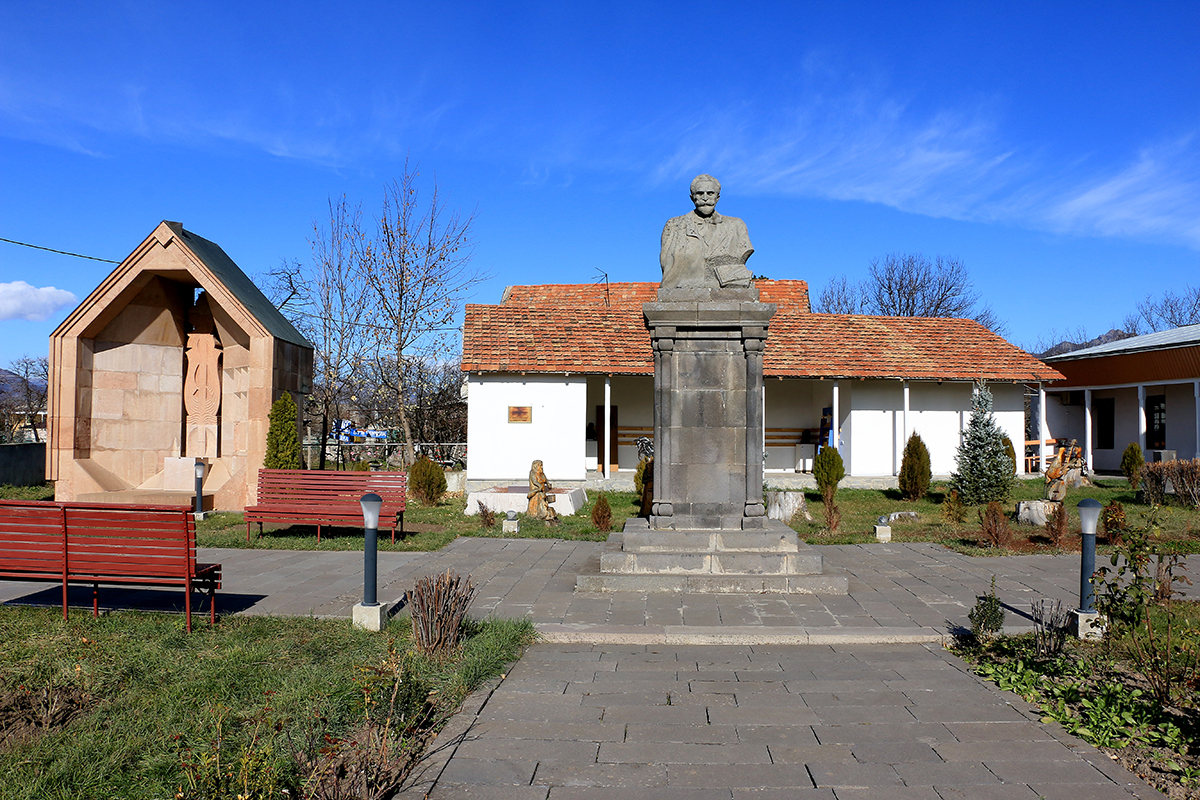

We were planning to explore the village and stay here overnight, then continue our exploration of Debed canyon the next day before heading to Georgia. The house-museum of Hovhannes Tumanyan, Armenia’s national poet, was still open, so we decided to visit it first. The house where the poet was born was turned into a museum in 1939. One of its workers, a mid-aged woman, took us on a quick tour around the museum. We rushed through the rooms, the lady quickly described the exhibits. “And there, under that monument in the yard, Tumanyan’s heart is buried,” she said as we left the museum. “Tumanyan’s what? Did you say, heart?” I thought I misheard it. Turned out, in 1923, when the poet died in Moscow, his son asked the doctors of the morgue to give him his father’s heart. Poet’s body was buried in the Armenian Pantheon of Tbilisi, while the heart was first kept at Tumanyan’s home by his relatives. It was then taken to the museum of the present-day Yerevan State Medical University, and only in 1994 was the poet’s heart finally buried at his birthplace.
The sunset was particularly beautiful. The sun was slowly setting down behind the roofs of the houses, disappearing somewhere on the other side of the canyon, the last rays making their way through the tree branches. We wandered around the village, enjoying the evening, but also looking for a place to sleep. Making a few phone calls, we eventually decided to stay with an elderly couple who gave us a warm welcome. They treated us to a delicious dinner, during which the old man did most of the talking. He joked, shouted, laughed exposing the few of the remaining teeth, cursed his fate, shared stories of his youth, occasionally repeating the same phrase: “How strange?! Why am I talking so much today? Strange. Very Strange.” We spent a couple of hours with them and then retired to our beds. There was a long day ahead tomorrow.
By the time we left our hosts to continue our exploration of Debed canyon, the villagers of Dsegh were already busy with their daily routine, chasing their cows down the muddy roads and out into the fields. We walked through the village to its western side that faces the canyon. One can see the surrounding landscapes from here, the Debed river, the villages that reside on the other side of the canyon, the forests, and the mountains. A steep descent from here took us to the ruins of the 13th-century Forty Infants monastery.
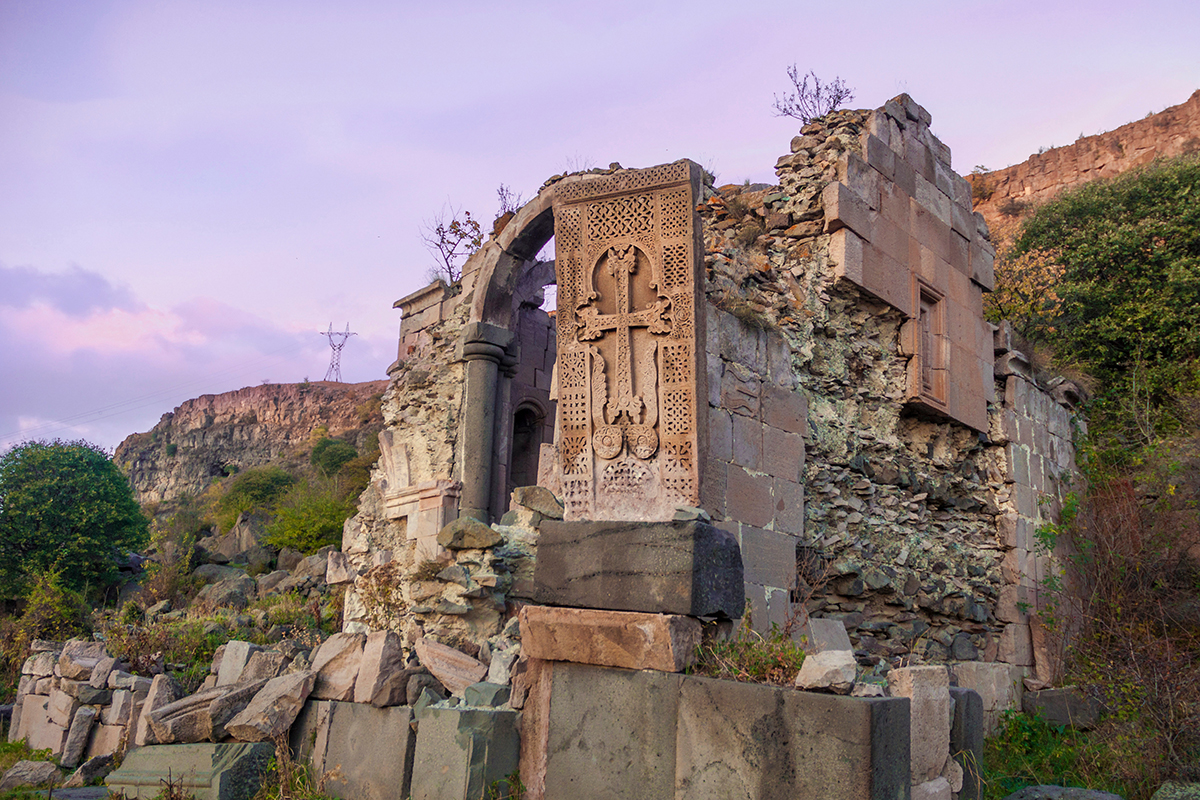

Back in the old days, it was a rather large monastic complex that consisted of several buildings, including the main church that was built in 1241-1256, the vicarage, the dwelling areas, and other structures of which very little survived to this day. We wandered around the ruins, taking photographs, and exploring the carvings of the surviving walls. A little above the ruins was a nice flat area where we sat down to drink tea, enjoying the scenic view of the gorge.
Our next destination was another monastery nestled on the side of Debed canyon, the Bardzrakash Saint Gregory. Neither of us heard of it before, and we learned about it from our hosts at the guest house we spent the night at. They gave us brief instructions on how to get there: “Walk through the fields towards the cemetery, you’ll see a sign, then simply walk down the path. It will take you to the ruins”. Following the muddy road, we walked about 2 km, greeting a lone villager and watching a cat hunting mice in the fields along the way. A narrow path led us down into the forest. Dry leaves rustled underfoot. Not long after we noticed the ruins of the monastery behind the trees.
We were stunned by the monumental forms of the monastery, which, though in ruins, could still impress even the well-traveled person. Bardzrakash St. Gregory was built throughout the 10th-13th centuries, and was named in honor of St. Gregory the Illuminator, the first patriarch of the Armenian Apostolic Church and the patron saint of Armenia. We walked through the ruins, exploring every corner of the complex: the 10th-century church, the 13th-century cathedral of St. Astvatsatsin, and its narthex with delicate carvings on the walls, numerous khachkars. Wandering between the walls, we imagined what life looked like here when the monastery was active. What fate did the monks who lived and worshiped here centuries ago face? One thing is certain though – they must have led a tranquil life here, surrounded by the forest.
We decided not to return to Dsegh, and instead take a path down to the main highway. In the village, we were told there’s a trail leading from the ruins to the main road, but our attempts to locate the path failed. So we gave up and began descending through the thick forest. We knew that we would reach river Marts at one point and following its current we could get to the road. But in about 20 minutes, we came across a rusty water pipe with a narrow path running next to it. Following the path, we soon found ourselves in a small roadside settlement with old houses.
Once on the main road, we hurried to hitch a ride to our last destination before heading off to the Armenia-Georgia border. A few years ago, when we were traveling through this area, a driver showed us a monastery on the side of the canyon. You could barely see it, so harmoniously was it blending with the cliffs. The driver didn’t know its name, nor he knew if there was any road leading to the monastery.
But now we knew that it was the monastery of Horomayr, and we had two options to get to it: either climb up the steep side of the canyon right from the road, or get to the nearby village of Odzun first, and then walk down to the ruins from there. We ended up choosing the first for it also seemed more interesting and less time-consuming. The sun was slowly setting down and our priority now was to return to the road before dark. We crossed the road and began our ascent to the monastery.
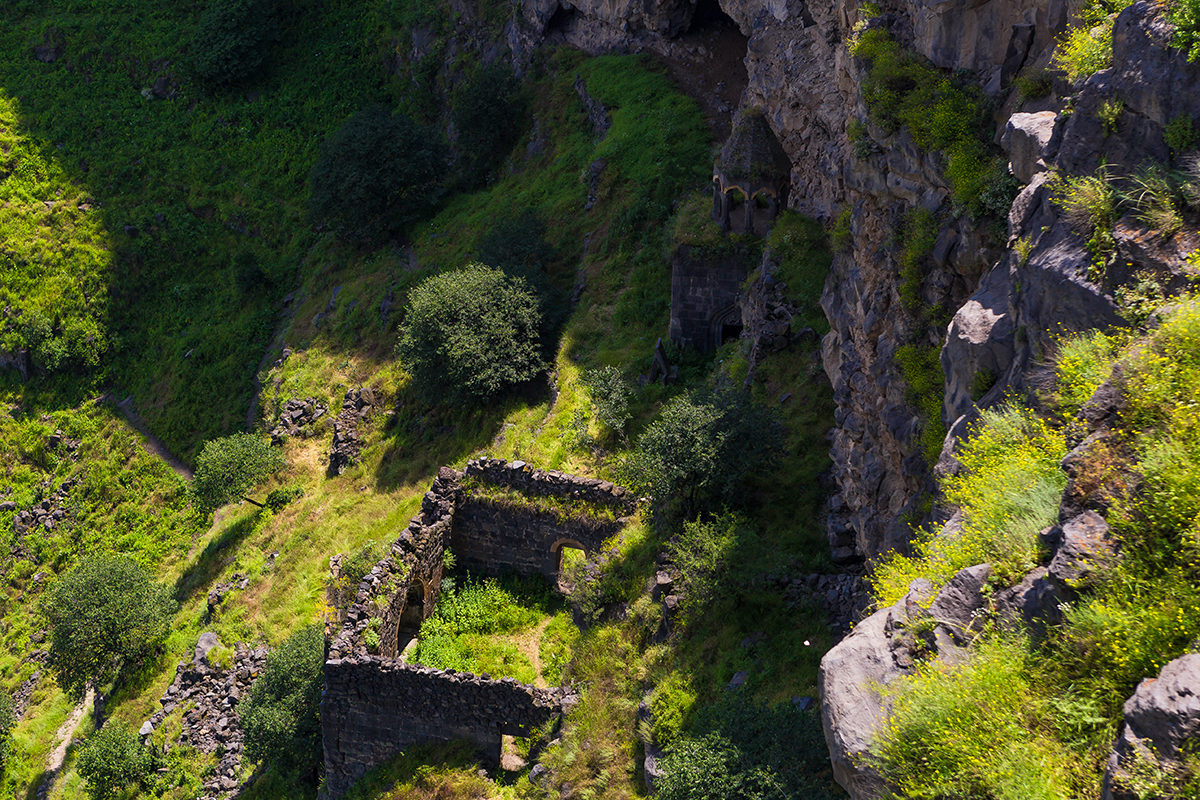

There was no visible path to follow, but the way up wasn’t very hard. Only our heavy backpacks slowed us down, forcing us to make stops to catch our breath. It took us about 45 minutes to get to the ruins, but it was worth it. The first thought that struck us was how did they even build the monastery in such a location. And what a location! Stunning views of the Debed canyon opened up to our eyes. One skill that medieval Armenian monks mastered to perfection was the ability to find ideal locations for their monasteries. That’s for sure!
Although first mentioned as early as in the 7th century, today’s surviving structures of the Horomayr monastery were built through the late 12th-early 14th centuries. The monastic complex consists of two parts – the lower monastery, also known as the ‘Monastery in the gorge’, is situated just below the cliffs on the side of the canyon, the upper, known as the ‘Monastery on the edge of the canyon’, sits on the edge of the plateau above. At first, we considered climbing up to the upper part of the monastery, but we quickly abandoned this idea for safety reasons. So we limited ourselves to exploring the lower monastery with its churches, chapels, numerous caves that served as monastic cells, medieval khachkars, and tombstones.
By the time we got back to the main road, it was already dark. But luck was on our side. In about 5 minutes, we got a lift to the border. The driver, a young man who thought we were foreigners and tried to communicate in English with us, was driving fast, which wasn’t a good idea considering the narrow winding road through the canyon. But in less than an hour, we were already at the Bagratashen border pass. We said our goodbyes and leaving Armenia behind, crossed into Georgia.

